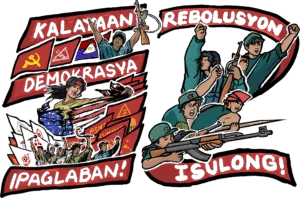The people’s war in India and the Philippines emerged from a common history marked by centuries of colonization, exploitation, and inequality. In both countries, the rural poor, the workers, and other marginalized sectors of society bear the brunt of capitalist plunder and greed, leading to the birth of proletarian movements aimed at dismantling imperialism and all reaction.
Inspired by the teachings of Marx, Lenin and Mao, leading communist parties in both countries wage their own democratic revolutions through protracted people’s war that aims to overthrow the semi-colonial and semi-feudal states in India and the Philippines. Since the reestablishment of the Communist Party of the Philippines (CPP) on December 26, 1968, and the prompt formation of the New People’s Army (NPA) on March 29, 1969, the protracted people’s war in the Philippines has valiantly advanced in the countryside. From its small beginnings, the NPA has become a nationwide force of several thousand Red fighters. Armed with unbending loyalty and boundless ties to the broad masses of peasants, workers and toiling people, and guided by the correct leadership of the Party, the NPA builds its strength and deals lethal blows against the enemy.
Likewise, the Communist Party of India – CPI (Maoist) has led the People’s Liberation Guerilla Army (PLGA) to unprecedented heights. From the first armed uprising in the 1960s in the remote Naxalbari village to the merger of the People’s War Group and the Maoist Communist Centre of India (MCCI), the PLGA has amassed significant strength, now commanding tens of thousands of Red fighters deeply rooted in the struggle of peasant masses in the Indian countryside.
But as we celebrate the victories of the people’s war, we must also pay tribute to the martyrs of the revolution who sacrificed their lives in the struggle. In observance of International Committee in Support of the People’s War in India’s (ICSPWI) campaign to honor the martyrs of the revolution in India and the Philippines, let us remember these heroes of the epic people’s war:
Ka Laan (March 20, 1951 – August 22, 2022) and Ka Bagong Tao (December 21, 1952 – August 22, 2022):
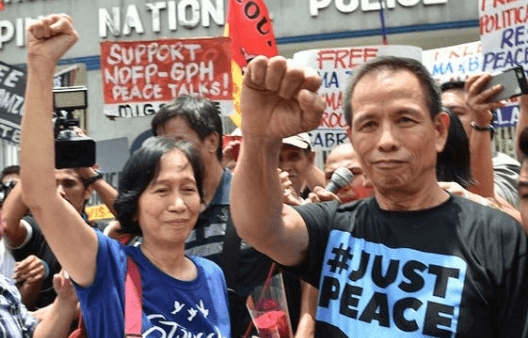
Benito “Ka Laan” Tiamzon and Wilma “Ka Bagong-tao” Austra-Tiamzon played key roles in carrying out the Second Great Rectification Movement (SGRM) in 1992-1998 which reaffirmed the Party’s Marxist-Leninist-Maoist stand and basic principles, and strategy and tactics of waging protracted people’s war to carry forward the national democratic revolution. They led the defense of the CPP’s Central Committee and frustrated the attempts of the revisionist traitors to lead astray or divide the Party.
Under their guidance, the Party and the Philippine revolution was steered onto a path of greater progress and expansion. For an impressive span of thirty years, Ka Laan served as the chairman of the Executive Committee of the Central Committee, which entailed the day-to-day leadership of the Philippine revolution. Ka Bagong-tao served as general secretary of the Central Committee. In the Party’s Second Congress in 2016, both were re-elected to the Central Committee and its central organs, demonstrating the high regard and trust they earned from their peers.
Throughout their lives, Ka Laan and Ka Bagong-tao dedicated themselves wholeheartedly to serving the oppressed and exploited masses. They relentlessly worked towards realizing the aspirations for national freedom and democracy, socialism and ultimately communism, giving their utmost effort and commitment to these noble causes. On August 21, 2022, Ka Laan and Ka Bagong-tao were brutally murdered by fascist troops of the Armed Forces of the Philippines.
Ka Joma (February 8, 1939 – December 16, 2022):
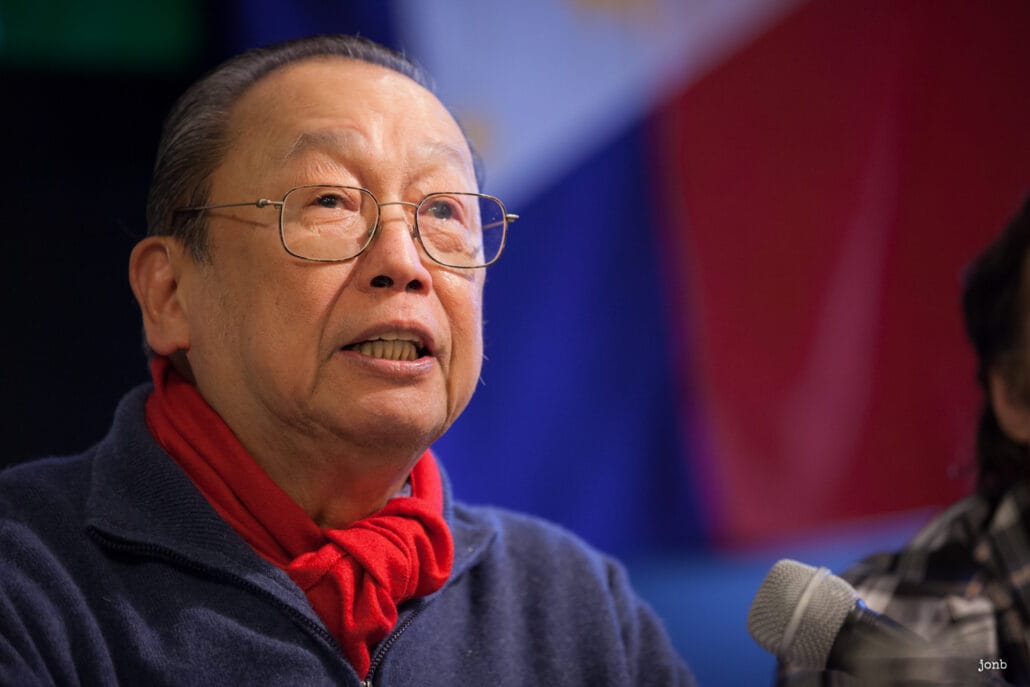
Ka Jose Maria “Ka Joma” Sison, the founding chairperson of the Communist Party of the Philippines, passed away peacefully after a period of hospitalization in the Netherlands on December 16, 2022. Through his prolific writings, Ka Joma laid the theoretical groundwork for the Philippine revolution. He played a key role in fortifying the Party in all aspects, imparting knowledge and expertise to thousands of cadres from the Party’s Central Committee, central organs, and regional committees, who then spearheaded the Party’s expansion and consolidation nationwide.
In 1969, under Ka Joma’s leadership, the New People’s Army was established. He provided invaluable training and guidance to the initial cadre of Red commanders and fighters. In 1973, he also led the establishment of the National Democratic Front of the Philippines (NDFP), further advancing the cause of the people’s war, which rapidly spread across the country like wildfire.
Despite facing nine years of torture and imprisonment in the hands of the enemy, Ka Joma’s indomitable revolutionary spirit never wavered. He emerged from captivity, having withstood the brutality of fascist dungeons, and was eventually freed when the dictatorship of Marcos was overthrown by the surge of people’s struggle and armed resistance.
In 1987, Ka Joma was compelled to go into exile when his passport was revoked by then Cory Aquino’s government, preventing his return to the Philippines. For more than 35 years, he resided in a modest apartment in the Netherlands, accompanied by his family, friends, comrades and with the support of Filipino migrant workers, he steadfastly continued his commitment to guide the Philippine revolution ever forward.
Ka Fiel (December 31, 1951 – November 25, 2020)
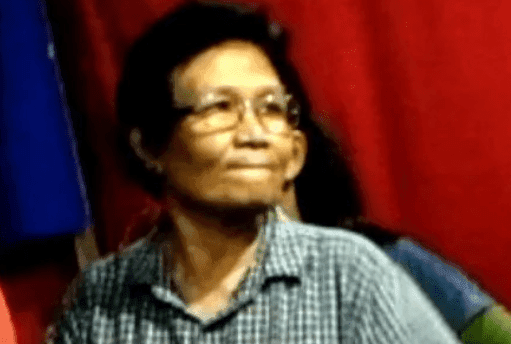
Eugenia Magpantay Topacio, fondly called “Ka Fiel” by her comrades served as secretary general of the CPP. She was a former member of the Political Bureau and the Executive Council of the Central Committee and headed the Party’s National Education Department. Ka Fiel played a leading role in the success of the Party’s 2nd Congress in 2016.
Ka Fiel was a youth activist during the Marcos fascist dictatorship. She joined the First Quarter Storm in 1970, and left school early to do full-time organizing work with the Labor Committee of Samahan ng Demokratikong Kabataan (SDK). She was first arrested in 1977 where she met her husband Agaton “Ka Boy” Topacio.
Ka Fiel as described by her comrades, was “an ardent student of Marxism-Leninism-Maoism.” She tirelessly read and re-read the classic texts of the Great Communist Teachers and successfully applied the proletarian viewpoint, standpoint, and method in solving critical issues of the day. She was renowned for her ability to be self-critical and to constantly learn from her mistakes.
Ka Fiel retired from active service due to age and health limitations. She suffered from diabetes and severe arthritis which severely weakened her body. In the wee hours of November 25, 2020, policemen gunned down Ka Fiel together with her husband Agaton “Ka Boy” Topacio in their residence in Angono, Rizal.
Comrade Anand (1954 – May 31, 2023)
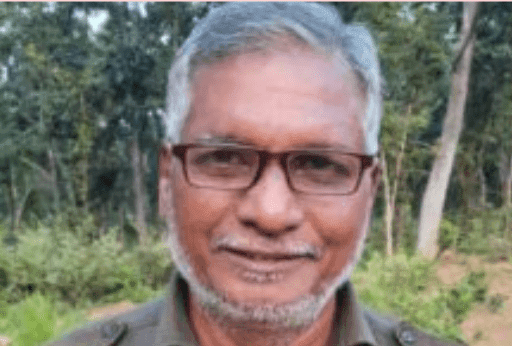
Comrade Katakam “Anand” Sudarshan was among the most prominent leaders of the Communist Party of India – CPI (Maoist), member of the Politburo Central Committee and is considered one of the most important guiding figures of India’s struggle for national and social liberation. Comrade Anand was a teacher before he joined the Naxal movement in the 1970s.
Over the course of five decades, he demonstrated unwavering commitment to the cause of the new democratic revolution in India. Notably, Comrade Anand played a pioneering role in expanding the armed revolution in the Dandakaranya area. He earned renown for his exceptional expertise in guerilla tactics, inflicting heavy setbacks against Indian security forces.
For nearly two decades, he served as Secretary of the Central Regional Bureau and also contributed significantly to the revolutionary magazine, People’s March, and helped elevate the Indian revolutionary struggle to international recognition and prominence. Comrade Anand’s legacy remains an enduring symbol of dedication and determination in the pursuit of justice and liberation for the peoples of India. He died from a heart attack on May 31, 2022.
Comrade Kishenji (1955 – November 24, 2011)

Mallojula Koteswara Rao, affectionately known by comrades and the masses as Comrade Prahlad, Kishenji, and Bimal, held a significant leadership position in the Indian revolutionary movement. During his high school years in Peddapally town, he actively participated in the historic Telangana movement in 1969. Inspired by the influential Naxalbari and Srikakulam movements while pursuing his studies at SRR College in Karimnagar, he joined the revolutionary cause and became an active member of the Party starting in 1974.
From 1994 onwards, Comrade Kishenji focused on expanding and strengthening the revolutionary movement in Easter and Northern parts of India, including West Bengal. As the secretary of the North Regional Bureau (NRB), he played a key role in leading Red fighters in Bihar, Jharkhand, West Bengal, Delhi, Haryana, and Punjab states. Moreoever, he actively participated in unity talks between the People’s War Group and the MCCI, leading to the formation of a unified Central Committee and Politburo after the merger of the two parties in 2004. He also served as member of the Eastern Regional Bureau.
Comrade Kishenji’s revolutionary journey spanned four decades, tragically ending on November 24, 2011, when he was captured alive and subsequently killed by the fascist forces of the Indian ruling clique. His unwavering commitment and contributions to the Indian revolutionary case has left a profound impact on the movement and the people he served.
Comrade Vijaya (1979 – December 10, 2005)
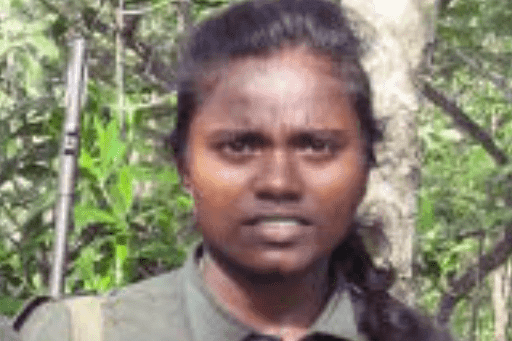
Injamuri “Comrade Vijaya” Mariamma was born in Gogulapadu village, located in Gurajala mandal in Guntur district. She was the cherished and only daughter of her poor, Dalit parents who loved and cared for her deeply. Her village, Palnadu, was a focal point of the class struggle in India, witnessing fervent anti-feudal movements lead by the peasant class in the 1990s. Despite having three police stations within an hour’s distance, the villagers provided shelter for the guerilla fighters. Many individuals from the village eventually joined the armed resistance, including Comrade Vijaya.
Her exceptional military abilities earned her the role of B section commander in the newly formed platoon in 2004, marking the first People’s Liberation Guerilla Army (PLGA) unit in Guntur district. Comrade Vijaya actively participated in various military campaigns conducted by the PLGA. Under the pen name “Hai Tsia,” she authored numerous stories and poems, inspired by a heroine from a Chinese novel.
Leading squads with expertise, she coordinated successful organizational, political and military tasks for the Party. In 2005, she further advanced her position and became the Candravanka ACS. However, on December 10, 2005, during an encounter with state security forces, her partner, Comrade Sunil was martyred right before her eyes. Undeterred, she bravely fought the fascist Indian troops alone until succumbing to enemy bullets.
The martyrs of the people’s war in India and the Philippines exemplify the spirit of self-sacrifice, determination, and courage in the face of adversity. Their sacrifices illuminate the path to social transformation, inspiring generations to rise against oppression and injustice. Their legacy extends beyond their local contexts, inspiring similar struggles for justice and freedom across the globe. May the sacrifices of the martyrs continue to fuel the flames of people’s war in India, Philippines and other parts of the world.
